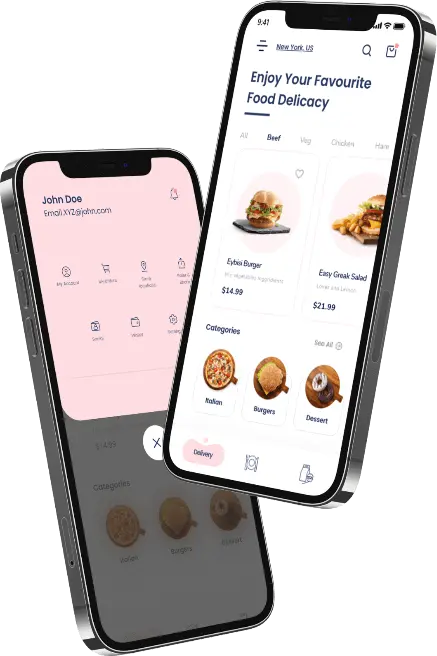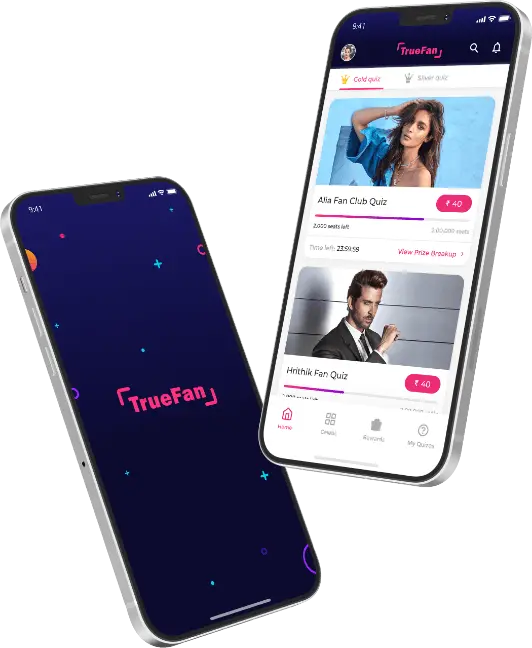3 Jul 2024
What is Omnichannel Commerce? Unlocking Its Power to Enhance Customer Experience Across All Channels
Nida Akbar

“Omnichannel Commerce “
Some of them may sound familiar; you have probably come across this term dozens of times already – be it in discussions that you have at the sales meetings or while reading an article at your two favorite marketing blogs that you follow. In this case, it is crucial to understand that but when a term gets so popular, it is sometimes used loosely.
In this blog post, before digging deeper, we will provide a definite answer to the question: What is omnichannel commerce? In addition, the differences between multichannel, omnichannel, and single-channel commerce will be outlined.
Find out how the omnichannel client acquisition and omnichannel digital marketing will be useful for your business at the present and in the future.
Now let’s explore the answer to the most asked question:‘What is omnichannel commerce?’.
Also Read – 8 Effective Methods and Resources for E-commerce Marketing Automation

What Is Omnichannel Commerce?
To define omnichannel commerce, it is more helpful to conceive it as an integrated strategy for sales that aims at providing consistent customer experience across different channels. The goal that is pursued corresponds to the idea of customers being offered maximum convenience regardless of whether they are using an M-controlling laptop, or are physically present in a store.
According to the Harvard Business Review, it has been estimated that 73% of engage your customers by the use of multi-channel during the purchasing process.
According to the State of Commerce Experience, it was identified that B2C consumers often investigate products online before going to a physical store, which is the case with 44% of the consumers and 58% Business to Business consumers. In a more specific manner, even if the consumers are in physical stores, they still use their mobile devices to search for additional information.
Such ecommerce trends mean that customers are often hesitant to make a purchase and usually consult all possible sources of information before making the decision.
Hence, an effective omnichannel strategy plan should take into account the whole process of selling to the buyer and not specific touchpoints within distinct channels.

What Is the Difference Between Omnichannel and Multichannel?
There is some sort of difference between omnichannel and multichannel commerce. Let’s break down each term:
As for the type of operation, single-channel commerce means selling your product, being the single sales channel. This could be a physical shop and a traditional online shop or just an avenue of selling products like eBay. This instance is perfect as a singular approach but when branching out to other networks, it gives the customers a better feel of the brand.
Multichannel commerce is the process of offering your product in one or many channels; the internet based, and the physical. The customers reach out for interaction through various platforms such as social media, calls and physical stores. Customers know where to find you and only minor issues need to be addressed before you are set to take on the competition. Finally, I would like to note that multichannel business is a good approach to raising brand loyalty today.
There is also the omnichannel commerce across multiple channels as in the multichannel commerce although this is where confusion might set in. But it is important to bear in mind that omnichannel commerce as a concept would not be possible with multichannel commerce. The main distinction is that omnichannel commerce is linked with all these channels, ensuring that customers have a seamless user experience while engaging with the business through any medium.
Now, let’s explore how omnichannel commerce can benefit your business.
Benefits of Omnichannel Commerce
1. Omnichannel Commerce Benefit #1: Enhanced Customer Experience
What do your customers expect most? A unified experience tops the list.
As per UC Today, while purchasing the product, 90 percent of the consumer want an omnichannel to revolutionzing retail browsing with homogeneous services in communication channels. This means that the more touchpoints are implemented into a contact, the more critical it is to ensure that any transition between a touchpoint, whether it is social ad, an email, a mobile push notification, a conversation with a chatbot or a meeting with one of the store employees is smooth and does not weaken the connection.
When all the boundaries that separate those channels are removed, the consumers are able to interact with your company in a way that they find comfortable.
2. Omnichannel Commerce Benefit #2: Increased Sales and Traffic
Related to the above-discussed idea, it may be somewhat intricate to transform the sales approach to be omnichannel capable, but the effort is going to pay off.
Research that surveyed 46 000 consumers showed that customers who engaged themselves with multichannel spent more than those who utilized a single channel.
This study shows that when a consumer engages with the brand across more than one channel, their buying behavior was correspondingly higher in physical stores.
However, the average expenditure by the customers who came in contact with four or more promotional channels was 9% higher than the single channel customers during their in-store visit.
3. Omnichannel Commerce Benefit #3: Enhanced Customer Loyalty
Omni-channel customers not only tend to spend more than customers through other channels, but also demonstrate a higher degree of loyalty to the brand. The same study also revealed that after one to six months of omnichannel shopping investing in the retailer grocery stores’ these customers shopped more frequently at these stores after an omnichannel shopping experience – by 23 %.
Multi-channel shoppers were also more likely to recommend it to a family or friend compared to single channel shoppers.
Also Read – The Digital Revolution via Online Jewellery Shopping App: Gem in the Crown!
So by setting up a long and vivid brand narrative, a brand can push away from using incentives like a coupon code or mid-sale advertisement. Customer loyalty is important because serving it will protect your brand.
Therefore, not only will an omnichannel strategy help increase sales figures within stores, but also increase customer loyalty as well. Sounds great, right?
4. Omnichannel Commerce Benefit #4: Enhanced methods on how data is collected
Those retailers who are able to integrate their sales channels with a common CRM system will be better placed to proactively offer their customers better tailored experiences.
With the help of the omnichannel approach, it is real to gather the necessary data and focus on its effective usage to create the corresponding content and offers in order to increase consumers’ purchases frequency both offline and online.
Personalization in Omnichannel Commerce
Customers expect a personalized experience at every channel and touchpoint, necessitating omnichannel personalization.
Modern consumers demand not only quality products but also fast service and easy access to information. They want to visit your web application, search for products effortlessly, compare prices, and view personal recommendations.
In the midst of overwhelming information, personalized content is key to capturing consumers’ attention. While generic information often gets overlooked, personalized content speaks directly to them.
Offering personalized omnichannel experiences has become crucial, as 74% of online consumers feel frustrated when websites display irrelevant content—and frustrated shoppers don’t make purchases.
Also Read – Reshaping the Shopping Landscape: Unveiling the Realm of Supermarket Grocery and Food Delivery Apps
Personalization is now essential for businesses
Effective data management is key to achieving this. Utilize a customer data engine to collect, visualize, and activate your data for omnichannel orchestration and personalization. By understanding your customers’ desires and personalizing content at scale, customers can find what they need faster, enjoy a better shopping experience, and businesses can achieve higher conversion rates.
How to Create an Awesome Omnichannel Strategy
Transitioning from a single-channel strategy, whether web-only or store-only, to a multichannel or omnichannel experience requires significant time, effort, and resources. However, it is well worth the investment.
Creating an Omnichannel Strategy
Here are five high-level steps to help you develop an effective omnichannel strategy for your brand:
1. Get to Know Your Customer: Avoid making assumptions. Research your target audience’s interests, behaviors, and needs. Solicit customer feedback, ask questions, and utilize social media and social listening tools.
2. Select the Right Channels: Identify where your customers are and what they are doing.
3. Define a Clear Purpose for Each Channel: Assign specific roles to each channel—one might be primarily for interaction, another for news updates, and so on.
4. Connect All Channels: This is the challenging part and requires flawless execution. Implement the right and latest technologies to track your customer across all touchpoints—from reading reviews on your website and seeing social ads to window shopping on an online marketplace and making a purchase at your physical store.
5. Maintain Your Channels: Continuously test and improve your strategy. Document these touchpoints thoroughly to best serve your customers. This approach will help you cultivate a loyal customer base that keeps returning.
By following these steps, you can create a successful omnichannel strategy that enhances the customer experience and drives business growth.
What Lies Ahead in Omnichannel Commerce?
Web-based brands are gradually exploring the existence of actual outlets.
Take Amazon for example; this retail giant opened its first physical store at Seattle in November 2015; it currently has over 460 shops in the United States, Canada, and the United Kingdom. The fact that Amazon’s store sees a future closely intertwining buying habits proves that it is aware of this reality.
Also, the importance of the Internet and specifically the place of mobile apps is growing. In the current society, people do not move around without the devices in their pockets – the mobile phones.
Versatile application features in mobile applications improve the possibility of merging the online and offline consumer contact point. For example, through a mobile barcode scanner, users can be directed to other information concerning the product, they can also order out of stock products from the online portal of the same store.
Also, it is important to know that customer service as a component of omnichannel persona is growing in relevance.
The need to adopt cognitive automated customer service has been advanced as the key to the future. Despite this, it does not eliminate the need for human service agents. Tech companies assure that thanks to AI and automation, human agents will have more valuable leads and context about customers to consider. In addition, the use of chatbots and social media will be a major influence to sustain continuous communication with the customers.
Here in digital retail, using an interconnected online shopping environment will turn into important to comprehend what customers are in existence for. This involves leveraging for a Commerce Experience Cloud Application which comprises Find, Know, Market, and Deliver—that all augments true personalization.
Consumers today, also have without much ado demanded the capability to engage with particular brands, at any given time, and place. Maintaining the customers’ ability to access brands across their multiple favored modes of contact is also crucial for brands because it helps provide full-featured omnichannel experience even post-purchase.

Embracing AI: Unlocking the Potential of Omnichannel Commerce
Today, having an omnichannel strategy and its flawless implementation across the ecommerce platforms is not only a convenience, but a necessity. But in the discovery of novelty, there exists a policy that is dubbed as Artificial Intelligence (AI) which is seen as the ultimate instrument inFully embracing the omnichannel technique.
AI acts as the driving force for the future advancement of ecommerce by leading the industry to the moments it has never been before in terms of customer relations. To build an integrated and quite engaging customer experience, AI’s vast possibility extends the businesses intelligence to accordingly connect and create the interrelationship of different channels.
Omnichannel can embrace AI for its three main components, with data analysis being one of AI’s key roles in this context. Imagine it as something akin to a comprehensive, hardworking analyst whose sole responsibility is to perform inquiries across enormous databases, for the purposes of identifying beneficial insights. It is crucial for marketers to know when, how, and through which marketing channel their customer interacts with them and what their needs are and the next are all enabled by AI. With this knowledge, you can then segment your audience and communicate with them appropriately, transforming your online store from just a usual website that customers visit to a companion that they consult throughout their shopping episodes.
However, it should not be thought that Artificial Intelligence is restricted only to operations on numbers or on data sets. It showed the way to change the face of customer care through the concept of conversational commerce. The cognitive virtual assistants can provide quick and continuous solitary support on queries/ problems to be solved as well as product recommendations linked with previous communication. They exemplify smart customer care—they are fast, efficient, and most of the time, always within reach.
In addition, the inventory control exercise, which is essential in maintaining brand integrity across different touchpoints, is being revolutionized by AI. The AI algorithms predict the trends in demand so that proper planning was made in a way that the customer can find what he or she wants through an online platform or perhaps in a physical store.
Here, AI reveals itself as a force that clearly holds great potentiality to redefine business models as well as further drive customer experience. It enhances the integration of the online and offline marketing and sales communication app, improves the customer care or support without increasing staff or human resource and enhances omnichannel promotions.
As we navigate the dynamic ecommerce terrain, it’s evident that the brands poised for success are those harnessing AI’s potential to cultivate a friendly, intelligent, and seamless shopping journey. Therefore, don’t merely adapt to the omnichannel trend—pioneer it with AI.

Understanding Omnichannel Digital Marketing
Companies always in the search for the best strategies that will allow them to interact with consumers through several touchpoints have given birth to the omnichannel digital marketing concept for retail and wholesale marketplace apps.
Omni-channel digital marketing, which is known as omnichannel digitalization or omnichannel digitalization, involves creating continuity with the customers across the multi-channel digital environment. It goes beyond mere requirements and engagements across various channels, but rather focuses on harmonizing the experience of the customer across different digital touch points of a particular brand.
A key goal for omnichannel digital marketing includes providing a digital omnichannel environment so that customers receive similar messages, promotions, and/or support, regardless of their selected touch point. The elderly aim to create direct and indirect paths from one channel to another to allow the customer to easily continue through the purchasing process at the channel most convenient for them at any given time with online via websites, it become a new social media sensation, through a mobile application, via email campaigns, or in a physical store.
When brands adopt the omnichannel digital marketing concept, they can improve their connection with users and enhance brand preference and corporate development.Here are some key benefits:
1. Consistency: Building a recognizable brand voice and visual identity and maintaining similarly consistent messaging across all channels contributes to client satisfaction and brand familiarization.
2. Personalization: The integration of customer data and insights from all the contacts means that the marketing goals of companies can be personalized, making the targeted content, recommendations, and offers cater to each customer.
3. Convenience: Integrated digital marketing is self-service in that it makes it possible for customers to engage with the brand through multiple ways, thus increasing its appeal in terms of convenience.
4. Optimization: The use of data analytics and shoppers’ profiling, and tracking of shoppers’ behaviour across multiple touch points enables marketing managers to enhance the marketing mix and overall marketing effectiveness in terms of sales conversion rates, perceived customer satisfaction, and marketing profitability.
Example of Successful Omnichannel Experience: Yves Rocher
Business Challenge: Yves Rocher, a global cosmetics and beauty brand, is committed to offering high-quality, customized solutions for every skin type while prioritizing sustainability. However, the brand sought to enhance its personalized product recommendations for both returning customers and first-time visitors, aiming to deliver a truly tailored experience to each individual and these apps are influencing our lives.
Solution: To address its personalization goals, Yves Rocher partnered for Engagement for real-time and personalized product recommendations. Despite the challenge of limited customer data history for first-time visitors, Engagement’s algorithms swiftly generated personalized recommendations as soon as visitors interacted with products on the site—achieving this in a fraction of a second.
As a result of this real-time personalization effort, Yves Rocher experienced an 11x improvement in conversion rates compared to using more generic “top-selling products” recommendations.
Example of Successful Omnichannel Experience: Benefit Cosmetics
Business Challenge: Benefit Cosmetics is a lifestyle app, renowned as the No.1 Prestige Makeup Brand and the No.1 Brow Brand Worldwide, is celebrated for its fun and instant beauty solutions. With iconic products like Hoola Bronzer, BADGal Bang Mascara, Precisely My Brow Pencil, Gimme Brow, and Porefessional Primer, Benefit enjoys widespread popularity among makeup enthusiasts.
Solution: During a highly effective “Blush Launch” omnichannel campaign, Benefit Cosmetics used customer Engagemen algorithm in order to run email marketing campaigns, lead gen, and weblayers. Several insights can be derived from the presented case, the first one is that after acquiring a new customer, email marketing automation was instrumental in helping such customers progress further with Benefit.
The campaign was strategically divided into three phases: being progressively more clear by the type of campaign, where each type of campaign prior to, during and after launch have different goals (launch awareness, new customers and sell-through). In order to satisfy the above objectives, the technological advance Engagement algo was used for the purpose of communication dissemination.
Finally, the amount of the click-troughs in the frames of the Blush Launch campaign was higher 50% compared to other campaigns, worked Benefit in the corresponding year.

Are You Prepared to Deliver an Enhanced Omnichannel Customer Experience?
Navigating the constantly evolving landscape of commerce poses its challenges.
Today, an increasing number of brands are recognizing the advantages of omnichannel approaches to optimize both online and offline channels, as well as to elevate customer service standards. Transitioning from a single-channel or multichannel strategy to an omnichannel framework demands time and dedication, but the rewards are undoubtedly worthwhile.
Here’s a brief summary of the disparities between single-channel, multichannel, and omnichannel commerce and how these three enhance importance of ecommerce:
1. Single-channel commerce: Operates solely through one sales channel, such as being exclusively web-based or store-based.
2. Multichannel commerce: Engages customers across multiple channels, spanning both online and offline platforms.
3. Omnichannel commerce: Seamlessly integrates all channels, providing customers with a unified experience across every platform.
Is your business prepared to embrace omnichannel commerce? Discover how to formulate an omnichannel with a mobile app development company in USA for customer engagement strategy and recognize why investing in one is imperative for your business’s success.
Moreover, contact an app development company to create various apps in healthcare, aviation, Payment app and more.

Combining Omnichannel Commerce and Digital Marketing
In conclusion, the questions whether it is possible and effective to combine the omnichannel e-commerce and digital marketing strategies with the help of an ecommerce app development company can be answered positively: that is the only way to succeed in the world that is out of control today and which needs new solutions for its today’s problems. Overall, if a brand can support multiple channels and understand the needs and wants of the customers, the brands will gain a deeper understanding of the audiences which will result in improved brand loyalty and customer growth.
Observing such companies as Yves Rocher or Benefit Cosmetics, it became clear that the application of AI can bring extraordinary achievements when it comes to creating and implementing omnichannel strategies that meet customer needs and expectations.
While going through such a topic as the intricacies of implementing an omnichannel strategy, one should be aware of the differences between single, multi, and omnichannel. Each has its own advantages but it is the best practice of all available channels that is the main characteristic of omnichannel e-commerce.
Therefore, irrespective of whether you are a novice at the practice of omnichannel planning or are seeking to fine-tune your efforts toward these ends, the time has come to pay more attention to the enhancement of the omnichannel consumer experience. As such, you will lay down fundamental groundwork for future brand success in today’s evolving market.
Get in touch with Techugo’s team to incorporate omnichannel e-commerce and enhance your startup.
Get in touch.
Write Us
sales@techugo.comOr fill this form



 SA
SA  KW
KW  IE
IE AU
AU UAE
UAE UK
UK USA
USA  CA
CA DE
DE  QA
QA ZA
ZA  BH
BH NL
NL  MU
MU FR
FR 













